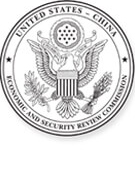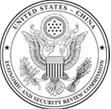Research
Research

After the stock market turmoil last August, Chinese regulators were hoping for a peaceful start to the year, preparing to wind down the ban on sales for big shareholders and launching a new mechanism (a circuit breaker) designed to prevent dramatic falls on par with those seen last year. The plan backfired. China’s Shanghai and Shenzhen stock markets crashed on January 4, the first day of trading, followed by another crash on January 7; in both cases, the circuit breaker halted trading. The combined rout erased more than $1 trillion of value. The government’s attempts to stem the meltdown only worsened the situation, confusing investors and raising fresh doubts over the ability of the Chinese government to manage a slowdown in the economy. They also exposed the contradiction inherent in the Chinese Communist Party (CCP) leadership trying to introduce market-oriented policies for the broader economy while maintaining control over the composition and behavior of the Chinese stock markets—an approach that leads to greater volatility and moral hazard.
Research

The U.S.-China Economic and Security Review Commission invites submission of proposals to provide a one-time unclassified report on China’s industrial and military robotics development. Electronic or hard-copy proposals must be submitted by 5:30PM (EST) on February 02, 2016.
Research

The U.S.-China Economic and Security Review Commission invites submission of proposals to provide a one-time unclassified report on Chinese investment in the United States. Electronic or hard-copy proposals must be submitted by 5:30PM (EST) on February 01, 2016.
Research

The U.S.-China Economic and Security Review Commission invites submission of proposals to provide a one-time unclassified report on Chinese investment in the U.S. aviation sector. Electronic or hard-copy proposals must be submitted by 5:30PM (EST) on January 29, 2016.
Research

Leading up to the 2016 election, Taiwan’s electorate has grown largely dissatisfied with the state of the domestic economy and increasingly worried about Taiwan’s growing dependence on China. Amid stagnant growth and wages, the Democratic Progressive Party (DPP) has focused its campaign on improving Taiwan’s domestic economy through expanded social welfare benefits, a higher minimum wage, and new local sources of innovation. Meanwhile, the economic platform of the Chinese Nationalist Party (Kuomintang, or KMT) has largely been defined by promoting Taiwan’s external economic relations, especially with China, as a means of supporting export-led growth. This report provides an objective review of major economic indicators in Taiwan, and evaluates the implications of political transition for Taiwan’s economic relations with China, the United States, and the international community.
